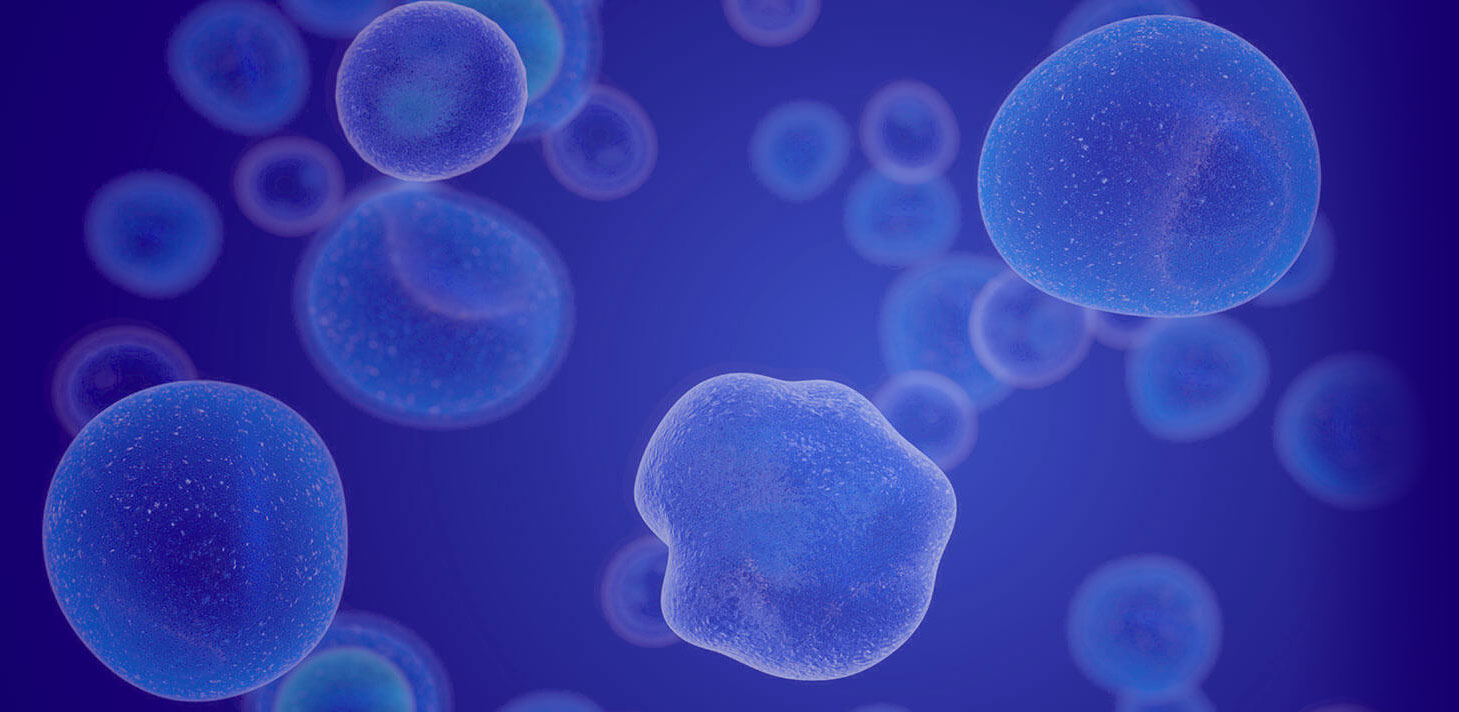Hip Injury Treatment
Conveniently located to serve the areas of Greenville, SC, Spartanburg, SC, Columbia, SC, Anderson, SC and Asheville, NC

Hip pain is a very common condition. One in every four Americans will develop a painful hip condition by the time he or she reaches 85 years old. Hip injuries are often caused by problems involving muscles, ligaments, bones, and other soft tissues located in the proximal thigh and buttock. Painful hip and thigh conditions have shown to respond wonderfully to regenerative medicine. Osteonecrosis, osteoarthritis, bursitis, tendonitis, and labral tears are just a few of the maladies that we can treat at Daisy Stem Cell Therapy. Non-surgical procedures work by decreasing inflammation and encouraging the growth of healthy cartilage, bone and other tissues in and around the hip joints. This results in decreased pain, improved function and mobility, and a reduced risk of potential falls.
Dr. Haasis is dedicated to providing non-surgical pain relief to common injuries and hip pain. In short: he gets patients moving again. Dr. Haasis is proud to serve the needs of Greenville, Spartanburg, Columbia, and Anderson, South Carolina, as well as Asheville, North Carolina. Contact one of our six locations online or call (864) 775-5682 to request a stem cell consultation.
Contents
How to Heal Hip Injuries
Hip injury treatment can put a spring in your step and add years to your vitality. Limited mobility of the hips shouldn’t be something you simply take sitting down. The hips are a major factor of mobility, so when the hip’s range of motion is limited, it can be frustrating. When gone unchecked, hip pain can escalate from uncomfortable to painful. But many people aren’t quite ready to undergo hip surgery or hip replacement. That is why stem cell treatment is the ideal regenerative approach for alleviating hip injuries.

Hip stem cell treatment is a straightforward procedure. Dr. Haasis uses allograft cells that are exhaustively screened for safety and effectiveness. These cells are skillfully injected into specific points on the hip that require the most attention.
Once the undifferentiated cells are introduced to the hip area, they can quickly evolve into ligament, muscle, or other specialized cells. Your body will dictate the ways in which your implanted stem cells will respond to the injury or pain that needs addressing. For example, if you are suffering from tendonitis, your stem cells will detect the need for healthy new tendon cells and mature accordingly.
Men and women interested in a hip replacement or hip surgery alternative should contact our office today to request a consultation with the foremost stem cell experts in the Carolinas.
Types of Hip Pain
Osteoarthritis
Osteoarthritis is also known as degenerative joint disease. It occurs when the articular cartilage, the cartilage covering the top of the bones, degenerates or wears down. Osteoarthritis causes swelling, joint pain, stiffness, and decreased range of motion. Damages due to mechanical stress are one of the main causes of osteoarthritis.
Osteoarthritis commonly occurs in people who are over the age of 50. Among younger people, osteoarthritis can result from a previous injury or trauma, for example, a fractured or dislocated joint. In rare cases, osteoarthritis may be a hereditary condition.

The development of hip osteoarthritis correlates with obesity and a history of joint injuries. Hormonal changes may also coincide with the maturation of osteoarthritis, as it is more common in postmenopausal women than men of a similar age.
A patient may receive a diagnosis of osteoarthritis based on medical history and a physical examination. X-rays help verify the diagnosis. Conditions to look for on an x-ray include joint space narrowing, subchondral sclerosis (increased bone information on the joint), formation of subchondral cysts, and the development of osteophytes (bone spurs).
Osteoarthritis is the most common form of arthritis. According to an extensive study of over 26,000 respondents, approximately 0.85% of adults develop osteoarthritis of the hips at some point in their lives.[1]
Trochanteric Bursitis
Bursa is a small sac filled with fluid that prevents bones from rubbing together at the joint. The trochanteric bursa is located at the top outer portion of the femur, between the gluteus muscles. The bursae help facilitate the function of the greater trochanter of the femur. Greater trochanteric bursitis, also known as greater trochanteric pain syndrome, is an inflammation of the bursae.
This condition can result from an injury, such as twisting motions or from overuse. Trochanteric bursitis may sometimes arise for no obvious cause. The symptoms include hip pain while walking, tenderness over the upper part of the femur, or inability to lie comfortably on the affected side.
Causes of trochanteric bursitis include uneven leg length, iliotibial band syndrome, and weakness of the hip abductor muscles. The primary symptom is hip pain, especially on the outer side of the hip joint. X-rays, ultrasound and Magnetic Resonance Imaging (MRI) may reveal tears or swelling.
Tendonitis/Tendonosis
Tendonitis refers to the inflammation of a tendon, a flexible band of tissue that connects the muscles to the bones. When muscles contract, the tendons transmit their movement to the bones, making the human body wonderfully mobile. When the tendons are inflamed and irritated, they impair the pulling action of the muscles and the function of the hip joint overall. Symptoms of tendonitis can vary from aches or pains and local joint stiffness to a burning that surrounds the whole joint around the inflamed tendon. In some cases, swelling is accompanied by heat and redness, and there may be visible knots surrounding the joint.
With persistent tendon conditions, the pain is usually worse during and after activity. A tendon/joint area can become stiff the following day, as muscles tighten from the movement of the tendon. Tendonosis, however, is a chronic injury caused by an accumulation of small tears in the tendon that have failed to heal properly over time. Patients commonly find it almost impossible to keep from restraining the tendon, because even when the pain is gone, the tendon still hasn’t fully healed.
Tendonitis of the hip is usually caused by disease of the gluteal tendons that attach to the lateral hip. Inflammation of the iliopsoas tendon can cause snapping hip syndrome. Diagnosis is usually ascertained by physical examination. An assessment includes palpating the hip and leg region, as well as ultrasound and occasionally an MRI.
Labral Injury
The acetabular labrum is the cartilage that encloses the socket of the hip, known as acetabulum.[2] The anterior portion is most vulnerable to labral tears. It is estimated that almost 75% of acetabular-labral tears have no known cause.[3] Labral tears may occur from a single event or from recurring trauma. Activities requiring frequent lateral rotation or pivoting on a femur is a known cause of labral tear.
Falling on one’s side causes a blunt trauma to the greater trochanter of the femur. Since there is very little soft tissue to diminish the force of the impact of the greater trochanter, the entire blow is transferred to the surface of the hip joint. This may instigate a labral tear. Damage to the femur or hip socket causes a slow buildup of degradation to the cartilage, resulting in a condition known as femoral-acetabular impingement (FAI).
Benefits of Stem Cell Therapy
- Harnesses the healing power of your own body’s regenerative abilities
- Little to no downtime, especially when compared to extensive hip surgeries
- Responds to the chemical signals throughout the injured hip by turning undifferentiated cells into specialized new growth
Eligible Candidates
Men and women of all ages who struggle with hip mobility issues may be eligible for stem cell therapy. Ideal candidates are in good overall health and have realistic expectations for improvement. They may be experiencing one of more of the afflictions detailed above, yet they are not ready for invasive surgical procedures.
To determine if you are a candidate for stem cell hip treatment, contact Daisy Stem Cell Therapy.
Your Private Consultation at Daisy
The initial consultation is an essential part of your stem cell therapy journey. This is the time to explain the discomfort and limitations you experience. Dr. Haasis will then complete a brief physical examination. Taking into consideration his findings, your medical history, and your concerns, he will create a custom treatment plan to provide you with lasting pain relief. Dr. Haasis will explain the procedure process in great detail. You will receive preparations and recovery instructions at the end of the consultation, as well as an accurate quote. After all, an informed patient is a healthy patient.
Call (864) 775-5682 to schedule your next appointment at Daisy Stem Cell Therapy.
Stem Cell Therapy Procedure
Dr. Haasis carefully injects undifferentiated stem cells into the hip joint under local anesthesia.
Once inside the joint, the stem cells have the ability to repair the cartilage as they can multiply and generate into cartilage cell lines. Stem cells secrete soluble factors that manipulate the tissue microenvironment. By controlling joint inflammation and providing important growth factors, stem cells stimulate cartilage repair. Patients are free to return home after the straightforward 1-2 hour-long procedure.
Recovery and Results
You can alleviate any minor hip soreness with an ice pack, but Dr. Haasis may also prescribe pain medication. Over-the-counter pain relief will work as well.
You can resume normal activities within a week, but do not push your body. In about four weeks, you may be able to partake in more vigorous actions. Results continue to improve for six months following the procedure as the stem cells reach their heightened regenerative potential. To get a glimpse of your future satisfaction, please visit our glowing reviews page.
FAQ
How much does hip treatment cost in South Carolina?
No two patients are alike, just as no two injuries or conditions are alike. That’s why there is no set cost for hip stem cell therapy. The treatment and price are customized to the individual. After the consultation examination, the doctor will create a custom treatment plan which the price will reflect. Contact our offices today to request an appointment.
References
- Allen, K. D., & Golightly, Y. M. (2015). State of the evidence. Current Opinion in Rheumatology. 27 (3) 276–283. https://doi.org/10.1097/BOR.0000000000000161
- Fitzgerald Jr, R. H. (1995). Acetabular labrum tears. Diagnosis and treatment. Clinical Orthopaedics and Related Research, (311), 60-68. PMID: 7634592
- Groh, M. M., & Herrera, J. (2009). A comprehensive review of hip labral tears. Current Reviews in Musculoskeletal Medicine. 2 (2) 105–117. https://doi.org/10.1007/s12178-009-9052-9


